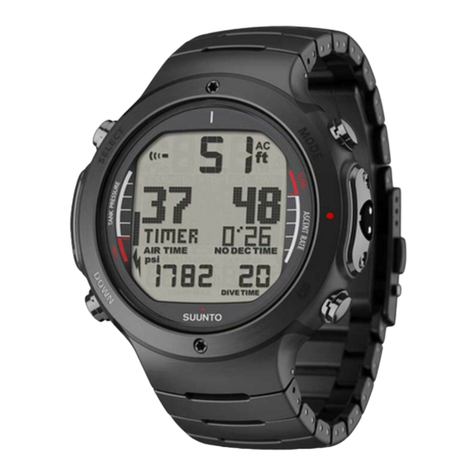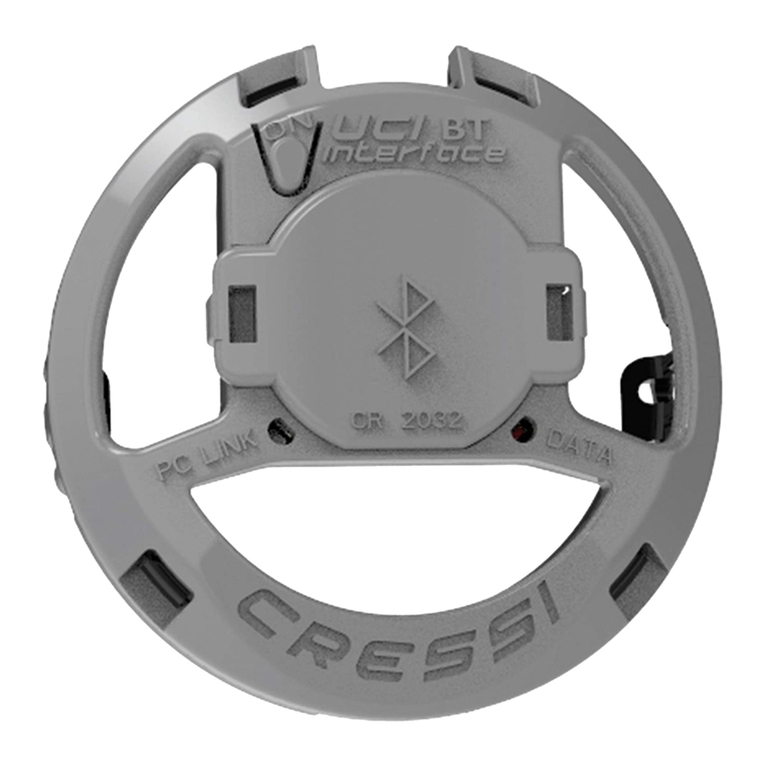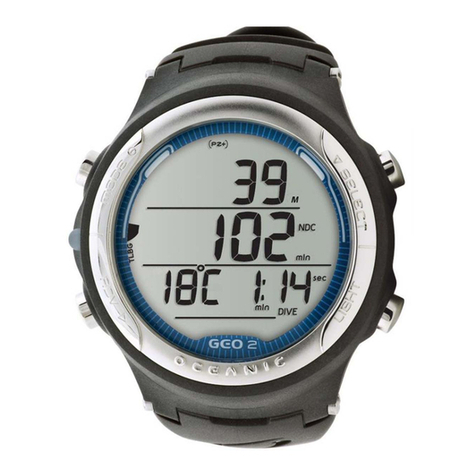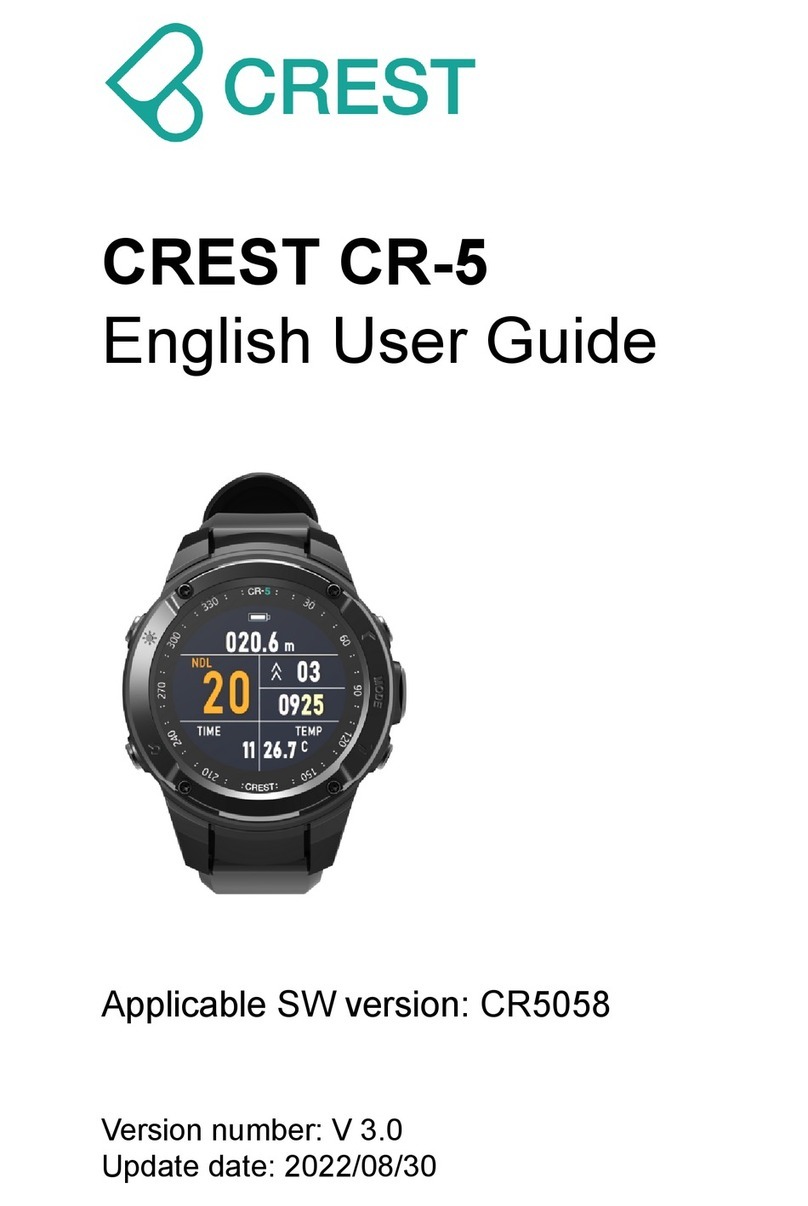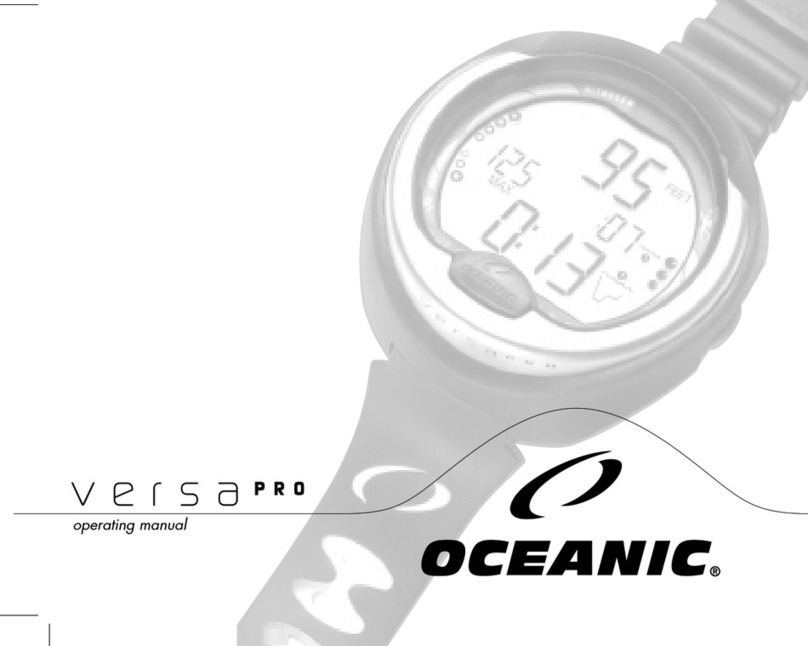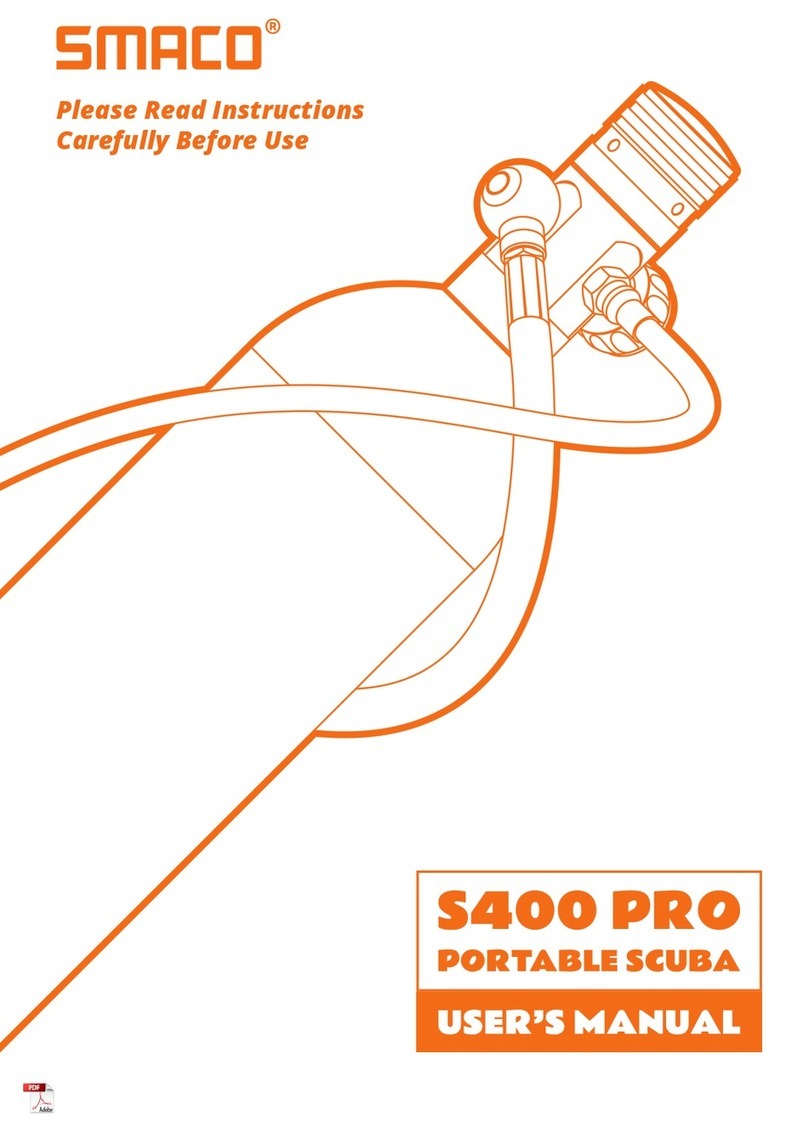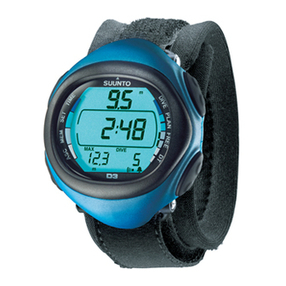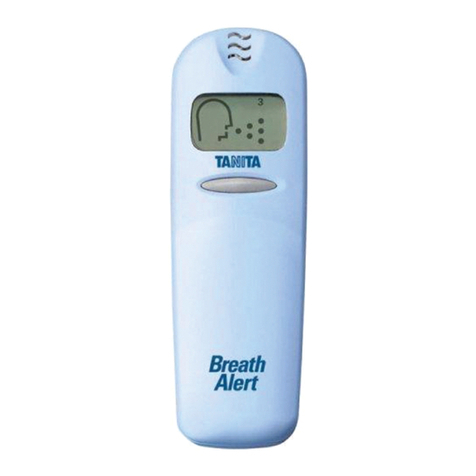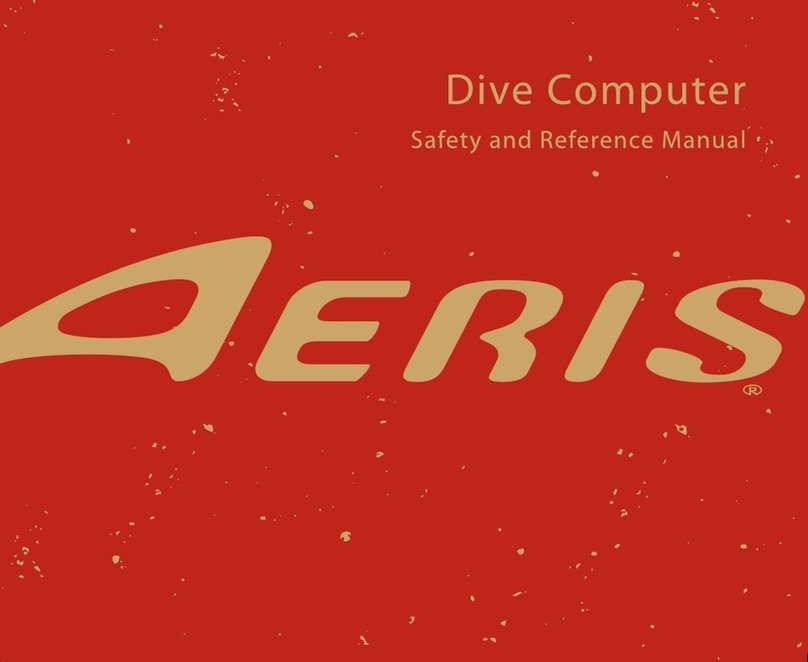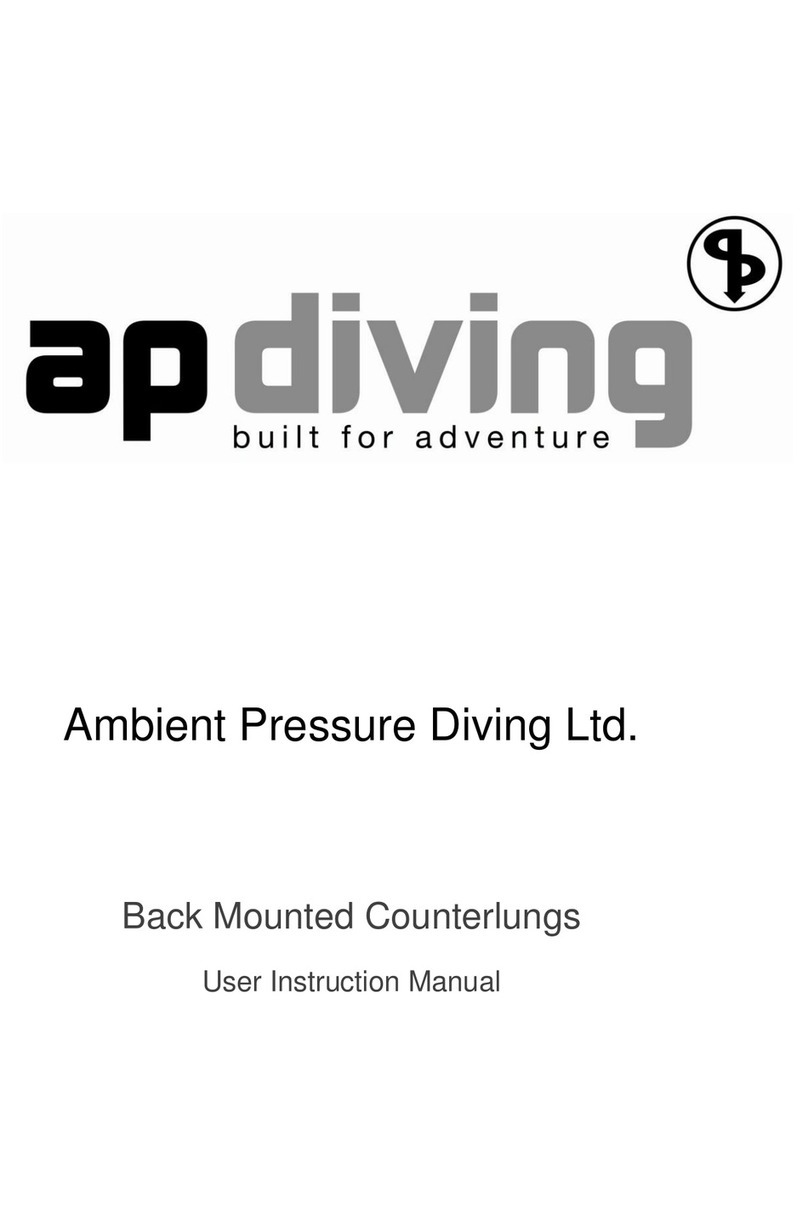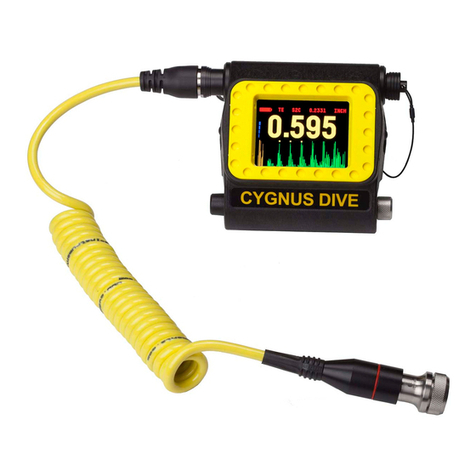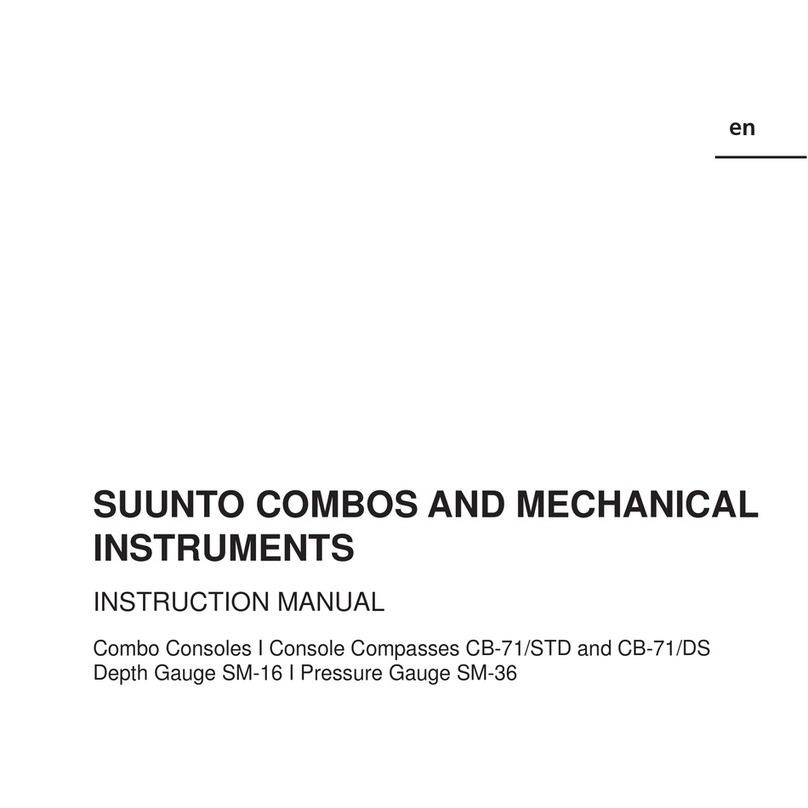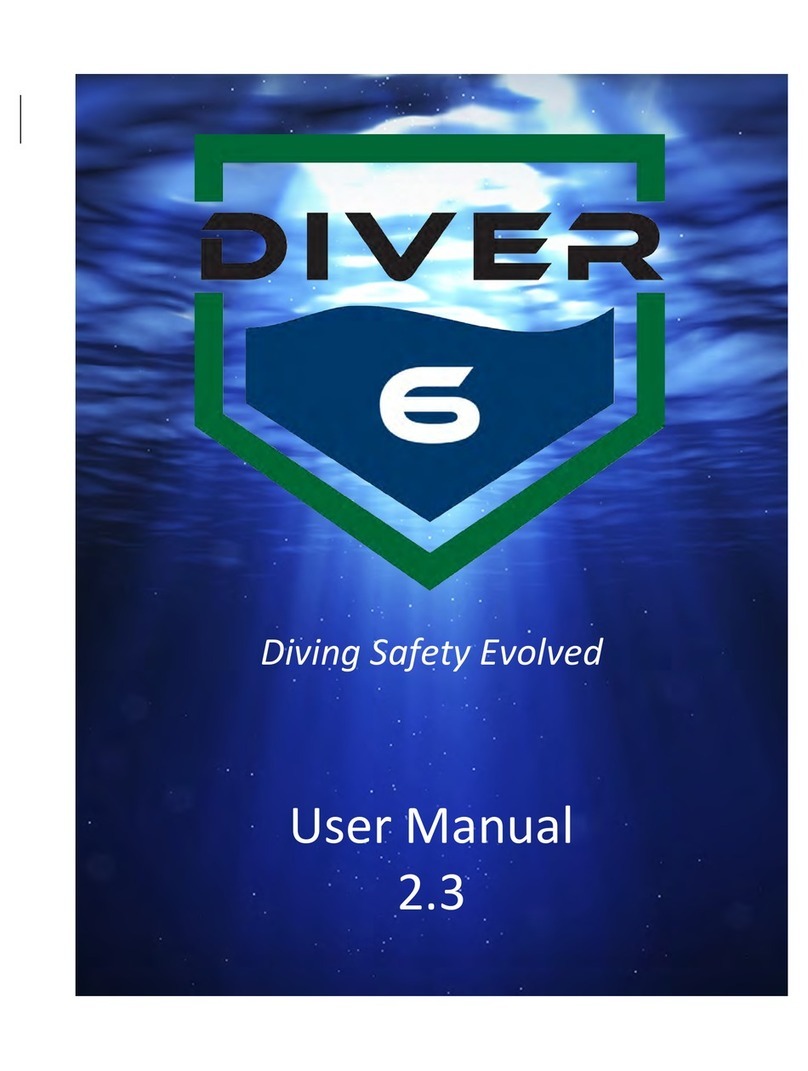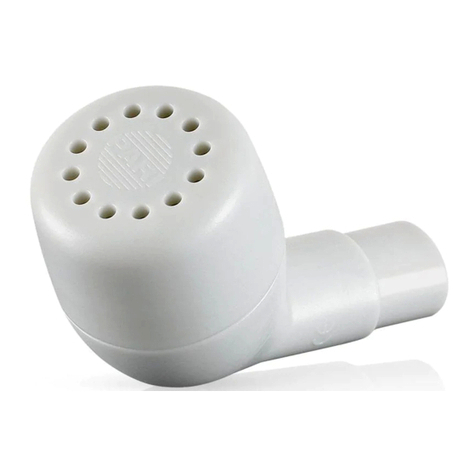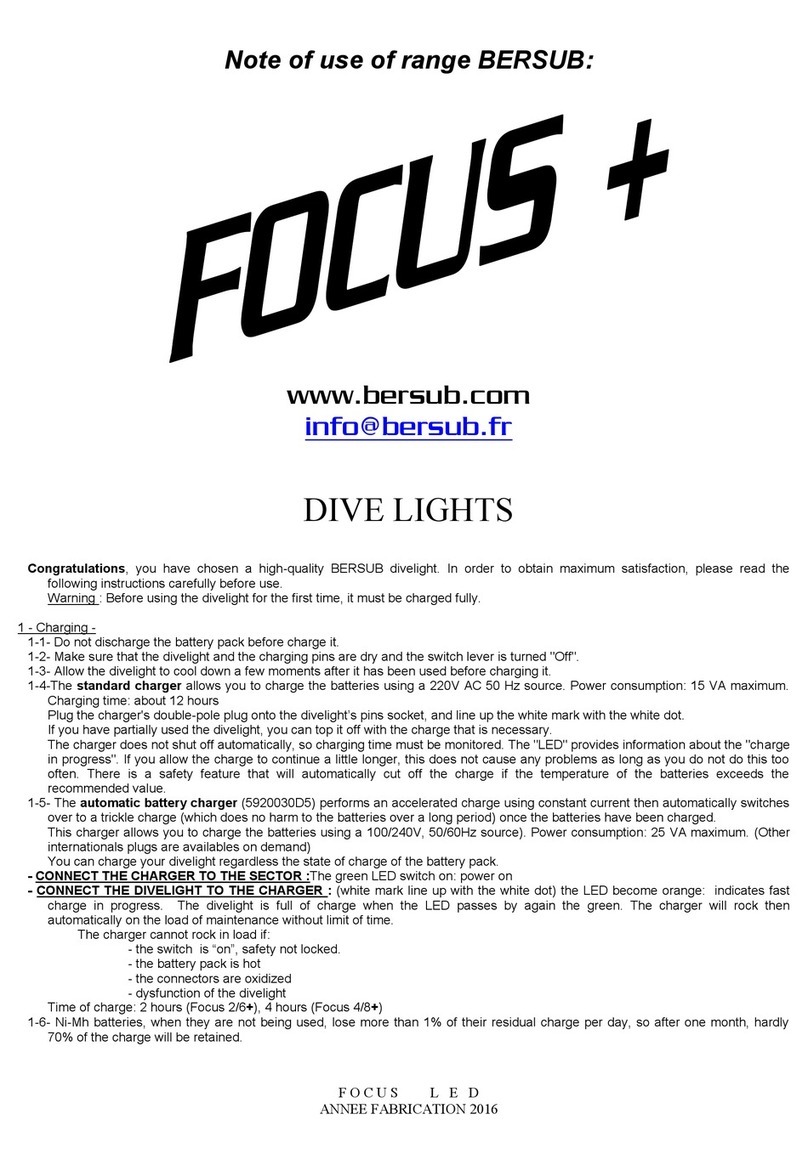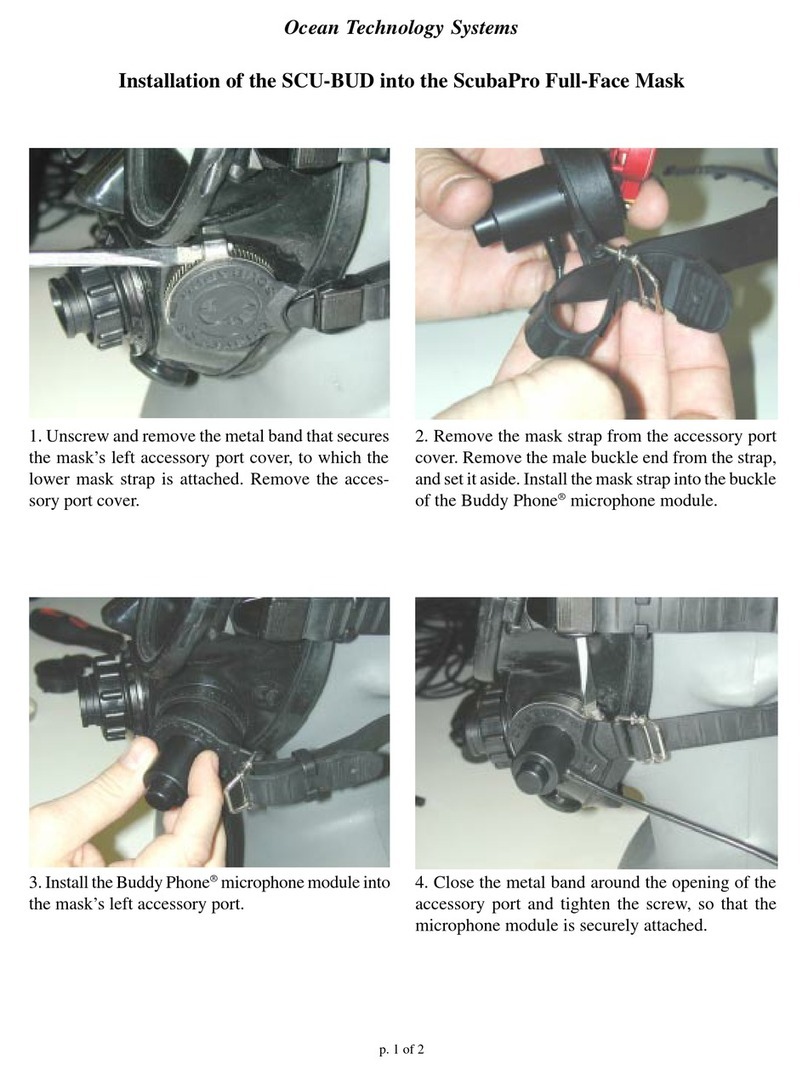ADM Armadillo Sidemount User manual


Introduction
Designed mainly for side mount cave exploration,
the Armadillo has evolved into a system that can be
used for all types of diving.
•Open water divers can use the harness with a
single cylinder mounted on their back
•Rebreather divers can incorporate their
CCR / SCR units as a back mount scrubber and
side mount oxygen and diluent drive cylinders
•Exploration divers can back mount their
bottom gas and side mount their decompres-
sion gases
• Extreme cave explorers can use the system as
it was perfected for, tight, remote, hard-to-
reach caves anywhere on the planet
Page 2

LP Inflator Cylinder
Bungee
Wing
Conforming
Bungee
Retrieval
Strap
Bungee
Attachment
Strap
Stainless
Buckle Waist Strap
Right
Shoulder
Strap
Left
Shoulder
Strap
Crotch
Strap
Crotch
Strap
Butt
Pad
Cylinder
Attachment
Rings
Scooter
Ring
Retrieval
D-Ring
Shoulder
D-Ring
Waist Strap
Crotch
Strap
Scooter
D-Ring
Stainless
Buckle
Retrieval
Strap
Cylinder
Bungee
Shoulder
D-Ring
Retrieval
D-Ring
Right Arm Left Arm
ArmadilloSchematic
Hip
D-Ring
Hip
D-Ring
Hip
D-Ring
Waist D-Ring
The Armadillo system
did not evolve over
night; hundreds of
dives over several
years were con-
ducted in multiple
locations and envi-
ronments. From
shallow reef diving in
the Florida Keys, to
extreme deep cave
exploration in Ten-
nessee, high flow
blue holes in the
Bahamas, cold wreck
diving in the Great
Lakes, archeological
discoveries in
Mexico’s Yucatan,
and swimming with
hundreds of Ham-
merhead sharks in
Coco’s Island, the
Armadillo side mount
harness has been
tested thoroughly.
From these experi-
ences, the Armadillo
system has been
perfected to provide
the serious diver with
a rugged tool to go
where no diver has
ever gone before.
Page 3
Fig. 3
Fig. 1 Fig. 2

Curve of the
shoulder straps
should be placed
at base of the
divers neck.
The waist strap
should wrap
around the
divers hips and
not around their
waist.
Even though the Armadillo harness is designed for
simplicity, it is extremely important that it fits the diver
correctly. An improper fit takes away the streamlined
performance and needed buoyancy control.
The Armadillo’s buoyancy control device (wings),
shoulder, waist, crotch straps, butt pad, and cylinder
attachments are designed into a single harness. The
wings have a maximum lift of 34 pounds.
The Armadillo harness is designed to fit most stan-
dard sized adults. It is not designed to fit extremely
small or extra large people. Sizes from 5 feet (152 cm)
tall, 115 pounds (52 kg) to 6 feet, 5 inches (196 cm)
tall, 250 pounds (113 kg) should have little problem
sizing the harness to fit them.
Positioning the harness on your body (Fig. 5)
The harness must be positioned on your body cor-
rectly so that the shoulder and waist straps fall in the
proper positions. This is essential for a proper fit.
To position the harness on your body:
1. Place the harness on your back with the
bungee side in.
2. Align the curve of the shoulder harness to the
base of your neck (see the diagram below).
3. Hold the shoulder straps tightly over
your shoulders.
4. Move your head and neck around to make sure
the harness is not cutting into the base of your neck.
If it is rubbing your neck, lower the shoulder harness
one inch (2.5 cm) or until it feels comfortable.
The waist strap is designed to wrap around the divers
upper hips and not around the waist as a normal open
water BCD fits. The wings are designed to have the
most lift at the divers hips and not at their shoulders.
This is important because most of the weight from the
cylinders is attached to the divers butt pad, causing
their waist to be the heaviest. Less lift in the divers
shoulders also allows for proper horizontal, head
down – fins up swimming position.
Divers Back
Page 4
Fig. 4 Fig. 5

Stainless
Buckle
Stainless
T-Bar
Stainless
D-Ring
Armadillo
Harness
Positioning the waist buckle (Fig. 6)
The waist buckle should be placed on either the divers right or
left hip (divers preference) as close as possible (1 to 3 inches) (2.5
to 7.6 cm) to the wing and hip D-ring.
Note: The shoulder straps are rigged to slide over the waist
buckle, which prevents the buckle from accidentally opening.
To position the waist buckle:
1. While holding the harness in place over your shoulders (have
someone assist you), wrap the waist straps around your hips.
2. Estimate the best position for the buckle on either the right
or left hip.
3. Mark the position with a marker.
4. Remove the harness and weave the buckle into place (see
the diagram below).
AC
B
Attaching the waist buckle (Fig. 7)
You must weave a T-bar and D-ring onto the
waist strap and the stainless buckle onto
the waist strap. The buckle should be
placed just above the left or right hip.
To attach the waist buckle: (Fig. 7)
1. Weave the waist strap up through slot
A and then down through slot C.
2. Weave the waist strap up through slot B
and then back down through slot A.
3. Tighten the strap onto the buckle.
4. Cut the strap 8 inches (20 cm) from the
buckle to allow for size adjustments if
needed in the future. Positioning the shoulder D-rings (Fig. 8)
D-rings should be placed at a comfortable location on the
shoulder straps. The D-rings are used to attach the low-pressure
inflator hose and the second stage regulators.
To position the shoulder D-rings:
1. Properly reposition the harness on your back.
2. Tighten the waist strap around your hips and lock it into
position with the waist buckle.
IMPORTANT: The Armadillo system was not designed to wear
without an exposure suit. Keep the adjustments lose enough for
your type of exposure suit (wet suit or dry suit). If you are plan-
ning on using multiple types of exposure suits, fit the harness
tightly to your bulkiest exposure suit. This allows for the harness
to also be used on thinner exposure suits.
3. Weave a stainless T-bar and D-ring onto the right and left
shoulder straps.
4. Position the T-bar and D-rings 1 to 3 inches (2.5 to 7.6 cm)
below the collarbone.
5. Make sure the left and right shoulder D-rings are even.
Page 5
Fig. 6
Fig. 8
Fig. 7

Positioning the armpit D-rings (Fig. 9)
D-rings should be placed just below your armpits. These
D-rings are used for the bungee retrieval straps and attach-
ment D-ring for stage cylinders, reels, cameras, etc.
To position the armpit D-rings:
1. Properly reposition the harness on your back.
2. Tighten the waist strap around your hips and lock it into
position with the waist buckle.
3. Weave a stainless T-bar and D-ring onto the right and left
shoulder straps.
4. Position the T-bar and D-rings just below your armpits.
Making the shoulder strap and crotch waist loops
with D-rings (Fig. 10 & 11)
Simple loops in the right and left shoulder straps
slide over the waist strap providing a five-point
harness. D-rings are placed onto these loops to
provide extra attachment points for reels, cameras,
slates, etc.
To make the loops with D-rings:
1. Properly reposition the harness onto your back.
2. Tighten the waist strap around your hips and
lock it into position with the waist buckle.
3. Slide the shoulder straps under the waist strap
and tighten to a comfortable fit. (1)
4. Mark the shoulder straps just below the waist
strap (Fig. 10)
5. Remove the harness and weave a T-bar and D-
ring 4-inches (10 cm) above the mark. Keep the
strap loose. (2)
6. Bend the shoulder strap under and flatten it at
the mark using a hammer.
7. Weave the strap back through the T-bar and D-
ring. (3)
8. Make the size of the loop large enough so it
slides over the waist strap and waist buckle. The
loop is used to prevent the waist and light
buckles from accidentally opening.
Armpit
D-Ring
Mark
Shoulder
Strap
2
1
3
Page 6
Fig. 9
Fig. 10
Fig. 11

13
4
2
Half Knot
Tighten
Half Knot
Tie
Another
Half Knot
Tighten
knot’s
and pull
together
A
B
Assembling the shoulder, crotch, and waist straps (Fig. 12)
The two shoulder and crotch strap loops slide over the waist
strap to form a five point harness.
To assemble the shoulder, crotch, and waist straps:
1. Put on the harness, and slide the left shoulder strap loop over
the waist strap.
2. Bend over and retrieve the crotch strap loop. Slide it over the
waist strap.
3. Slide the right shoulder strap loop onto the waist strap.
4. Push all three straps as far to the left as possible.
5. Insert the waist strap through the waist buckle and pull it tight.
6. Close the waist buckle and slide the remaining waist strap
through the waist D-ring.
7. Slide the right shoulder strap loop over the waist buckle. This
locks it in place.
8. Move the crotch strap into a comfortable position.
9. If you are using a waist mounted light on the left that is kept in
place by a buckle, slide the left shoulder strap over that buckle.
Note: If you decided to rig the harness with the buckle on your
left hip, reverse this whole process.
Left
Shoulder
Strap
Right
Shoulder
Strap Crotch
Strap
Attaching the low-pressure inflator to the harness (Fig. 13)
Note that the low-pressure inflator is attached at the BCD’s lower inside
right port. This protects the elbow and corrugated hose from abrasion and
snags. The low-pressure hose is designed for positioning on your right side
and secured to the right shoulder D-ring.
To attach the low-pressure inflator hose:
1. Attach the low-pressure inflator to the shoulder D-ring using a small
piece of bungee tied into a ring (see the diagram on this page).
2. Tighten the bungee enough to hold the inflator in place, but keep it
loose enough so that you can remove the inflator if necessary.
Tying a bungee into a ring (Fig. 14)
A ring bungee is no more than a strong bungee cord tied into a circle. Ring
bungee is used to hold gear in place on the harness, such as second stage
regulators, and is used in several different locations. They are strong, simple
to make, and easy to remove and replace in the field.
Page 7
Fig. 12
AB
A
B
B
A
Fig. 13
Fig. 14

Retrieval
Strap
Armpit
D-Ring
Adjusting the cylinder bungee (Fig. 15)
The key to any side mount system is its ability to
pull the cylinder valves and first stage regulators
tightly into your sides.
The Armadillo comes with two large bungees that
are attached to the inside back of the harness.
The bungees are extra long and need sized for
your chest girth.
A 13-inch (33 cm) piece of webbing with four
stainless grommets is attached to the inside back
of the harness. The bungee cord is threaded
through the grommet and a knot is tied into the
bungee securing it onto the harness.
To adjust the cylinder bungee:
1. Pull the bungee through the grommet to the
desired length (see the diagram on this page).
2. Tie a tight knot in the cord.
Note: Each person’s required bungee length is
different depending on his or her chest size. A
good rule of thumb is to start with the bungee
length just forward of your armpit. If the cylinder
valve and first stage regulator still protrude to far
forward, shorten the bungee. (Fig. 16)
Stainless
T-Bar
Cylinder
Bungee
Slider Link
Retrieval
Strap
Fixed Knot
Bungee retrieval strap (Fig. 17)
The bungee cord is also run through a small metal
slider link. The slider link is used for the bungee
retrieval system.
The bungee retrieval strap provides a quick
method of retrieving the cylinder bungee. It also
prevents the bungee from becoming lost when it
falls between your body and the harness.
The small bungee strap is attached to the slider
link and to the armpit D-ring. This strap should be
shortened as much as possible once the unit has
been sized to prevent snag points.
Page 8
Fig. 15
Fig. 16
Fig. 17

Fig. 19
Wing conforming bungee (Fig. 18)
The buoyancy inflation system is what separates the Arma-
dillo apart from other side mount systems. The Armadillo is
specifically designed to provide more lift on the divers hips,
which displaces the weight of the cylinders. This results in
less weight on the shoulders and ensures a proper horizon-
tal swimming profile.
The wing conforming bungee is designed to increase or
decrease the amount of lift depending on what type of
exposure suit and buoyancy demands are needed. A looser
bungee system allows for more lift when wearing a wetsuit
and a tighter bungee system pulls the wings in for a more
streamlined system and less lift when wearing a dry suit.
The conforming bungee also helps to prevent a common
side mount problem called “angel wings.” Angel wings are
when the BCD rides up high on the divers back making the
appearance of wings. This greatly decreases the streamline
effects of the harness and adds unnecessary drag, wear and
tear, and creates additional snag problems. The Armadillo’s
conforming bungee prevents an excessive angel wing effect
by pulling the BCD tighter towards the diver’s body.
To tighten the conforming bungee:
1. Cut the bungee cord at the tie off location on the BCD.
2. Tighten the bungee cord by pulling it through the BCD.
3. Retie the bungee cord.
Conforming
bungee tie
loop
Butt pad and attachment handles (Fig. 19)
The Armadillo harness incorporates a single butt pad
sewn from heavy-duty nylon webbing. Two metal handles
are bolted to the butt pad to provide a sturdy attachment
location for the cylinder clips. The crotch strap is sewn
directly into the butt pad and provides the fifth strap in
the five-point harness system.
The metal attachment handles are designed to handle the
weight of cylinders while in the water. Cylinder neck clips
should be added if the cylinders are transported attached
to the harness out of the water. The clips assist with the
weight of the cylinders while out of the water.
Page 9
Fig. 18

1
2
3
Feeding the cam strap (Fig. 20)
Cam straps are used for the attachment
points on the side mount cylinders. The
diagram on the left illustrates the proper
method for feeding the strap through the
cam strap buckle. Arrows are molded
into the cam buckle showing the direc-
tion to feed the strap.
Tank attachment straps (Fig. 21)
Each cylinder requires one cam strap with either a #1 or #2 brass
clip. The clips are used to attach the cylinder to the metal attach-
ment handles located on the back of the harness.
•#1 Brass clips should be used by divers with normal to large hips
•#2 Brass clips can be used by those with smaller hips to raise
the cylinders higher
There are two methods to attach the brass clip to the cam strap.
A. A T-bar is used to capture a heavy line looped through the
brass clip with a knot tied in the opposite end. When tightened,
the knot cannot pass through the T-bar.
B. Strong bungee is fed through the small hole on the cam strap
buckle and the eye of the brass clip. The cord is pulled tight
and a knot is tied into the bungee securing the clip close to the
cam strap.
Note: In both methods, the brass clip should be as close as pos-
sible to the cam strap.
A
B
Setting up the cylinders (Fig. 22)
Proper set-up of the side mount cylinders is essential to maintain proper
buoyancy and streamlining.
The cam strap is slipped over the cylinder and tightened by pulling the strap
tight and closing the cam buckle. The distance from the top of the cylinder
valve the cam strap is placed varies depending on your chest length. A good
rule of thumb is to measure from your armpit to your belt line. Place the cam
strap the same distance from the top of the valve.
Some types of cylinders, such as aluminum tanks, become buoyant as they are
emptied. For these cylinders, you may need to attach hard weights to the
cylinder cam straps in order to compensate for the buoyancy change. Hard
weights can also be added to the cylinder cam straps to offset the buoyancy of
wetsuits and dry suits. If additional weight is needed due to dry suit buoyancy,
a standard weight belt can be used under the Armadillo harness.
Back-up lights can also be attached to the cam straps brass clip eye and held in
place using rubber bands (Fig. 22).
Page 10
Fig. 20
Fig. 21
Fig. 22

Left CylinderRight Cylinder
6” HP Gauge
LP Armadillo
Inflator Hose
LP Dry Suit
Inflator Hose
6” HP Gauge
Back-Up
Lights
Second Stage Regulator
Right and left post cylinders (Fig. 23)
The cylinder bungee on the Armadillo is
used to pull the valve of the right and left
cylinders into your armpits.
A right (standard) and left
post valve is recommended
for side mount cylinders.
(These are the same valves
as on a set of doubles
without the cross over bar.)
Positioning the right and left cylinders in conjunction with the divers profile (Fig. 24)
The drawing below illustrates the proper angle of the cylinder on/off knob and the brass clip in conjunc-
tion with your front and back. The drawing also illustrates the proper positioning of the cam buckle and
added weight.
Note: The cam strap buckle and weight should be positioned between the diver and the cylinder to help
reduce the chance of a line snag.
The first stage regulators should be tilted slightly towards your front. All hoses, if possible, should be routed
down towards your front. Make sure the HP gauge is located so that it can be read during the dive.
Left Cylinder Right Cylinder
Left On / Off
Valve at 12:00
Right On / Off
Valve at 12:00
Brass Clip
at 5:00
Brass Clip
at 7:00
Cam Buckle and Extra
Weight between the
diver and the cylinder
Cam Buckle and Extra
Weight between the
diver and the cylinder
Page 11
Fig. 23
Fig. 24

Attaching cylinders to the butt plate (Fig. 25)
The two, 3/8-inch handles on the Armadillo butt
plate are the main attachment points for the side
mount cylinders.
To attach the cylinders to the butt plate:
1. Clip the right cylinder to the right attachment
handle on the butt plate.
2. Clip the left cylinder to the left attachment
handle on the butt plate.
Note: These attachments are not designed to carry
the weight of the cylinders out of the water. Cylinders
should be attached after you enter the water.
Attaching the cylinder bungee to the
cylinder valve (Fig. 26)
After the side mount cylinder is attached to the butt
plate handle, the cylinder bungee must be attached
to the cylinder valve.
To attach the cylinder bungee to the cylinder valve:
1. Reach under your arm and grab the large cylinder
bungee cord with your thumb.
2. Stretch the bungee around the backside of the
cylinder valve and over the on/off handle.
3. Release the bungee. This should pull the neck
and first stage regulator tight into your armpit.
Hose configuration and placement (Fig. 27)
The diagram to the left illustrates the proper hose
placement for side mount cylinders. A long hose can
be used on the left cylinder if desired and wrapped
up around the back of the divers neck.
Ninety-degree elbow adapters can be used on the
second stage regulators to prevent jaw fatigue from
sharp hose angles.
Custom length hoses for the LP inflators and regula-
tors can be designed to further streamline and
simplify the system. Lose hoses should be tucked
under the waist belt to further streamline the rig.
The second stage regulator that is not in use should
be clipped to the upper left D-ring. When changing
second stages underwater, unclip the regulator not in
use, exchange, and then clip the exchanged regulator
back onto the left upper D-ring.
Page 12
Fig. 25
Fig. 26
Fig. 27

Attaching a single cylinder (Fig. 28)
The Armadillo harness can also be used with a
single cylinder for recreational diving.
To set up the harness for a single cylinder:
1. Slip two cam straps through the slots located
on the back of the harness.
2. Feed the straps through their buckles and
slide over the cylinder.
3. Tighten the cam strap and close the cam
buckle. See the diagram below for a sug-
gested regulator configuration.
Attaching a bailout cylinder
When using a single cylinder, it is recommended
that you carry a redundant bailout system. A small
13 to 47 cubic foot cylinder can be side mounted
under one of the divers arms with it’s own first
and second stage regulator and pressure gauge.
Attaching triple cylinders
Triple cylinders can also be used by mounting a
single cylinder on your back and side mounting
two cylinders under your arms.
WARNING: The Armadillo only has 32 pounds
of buoyancy. Make sure you can obtain positive
buoyancy with all cylinders and equipment. To
obtain additional buoyancy, wear either a
thicker wetsuit or a dry suit.
Cam Straps
Primary Second Stage
LP Inflator
Octopus
HP Gauge
Page 13
Fig. 28
Fig. 29

Adjusting buoyancy and trim using permanent
chest weights (Fig. 30)
The most important factor with side mount configu-
ration is maintaining the proper head down, fins up
swimming position. The Armadillo harness was
designed with most of its lift capacity towards the
divers hips and off of the shoulders. Large steel
cylinders and heavy fins can pull the divers hips
down and out of the preferred swimming profile. To
counterbalance this, you can add two small, 2 to 3
pound trim weights to the harness shoulders.
Traveling with chest weights (Fig. 31)
Permanent chest weights can cause problems with
luggage weight restrictions during air travel. Most of
the time, single hard weights can be obtained at
foreign resorts or dive facilities for both the alumi-
num 80 cylinders and chest weights.
A simple method of attaching a hard weight to the
shoulder straps can be seen in Fig. 31.
An extra piece of 2-inch webbing and a T-bar can be
threaded through a hard weight and then through
the upper and lower shoulder T-bars and D-rings..
Counter
Balance
Chest
Weights
Page 14
Fig. 30
Fig. 31
www.AdvancedDiverMagazine.com
Warning:
Technical diving, including diving beyond recreational depth limits,
over head environments and use of compressed breathing gas
mixtures is extremely dangerous and can cause serious injury and
death even by those with proper training and years of experience.
DO NOT USE this harness if you have not obtained proper sidemount
cave training and certification.
Advanced Diver Magazine, nor its staff or contributors accept any
liability from the use of this diving harness.
The reproduction in whole or in part of any of the contents of this
manual is expressly forbidden without the written permission of the
Advanced Diver Magazine.
For proper sidemount training courses
For additional information on sidemount
diving, download the free
Advanced Armadillo Sidemount
Techniques and Configurations Manual
at www.AdvancedDiverMagazine.com
To be released July 2004

